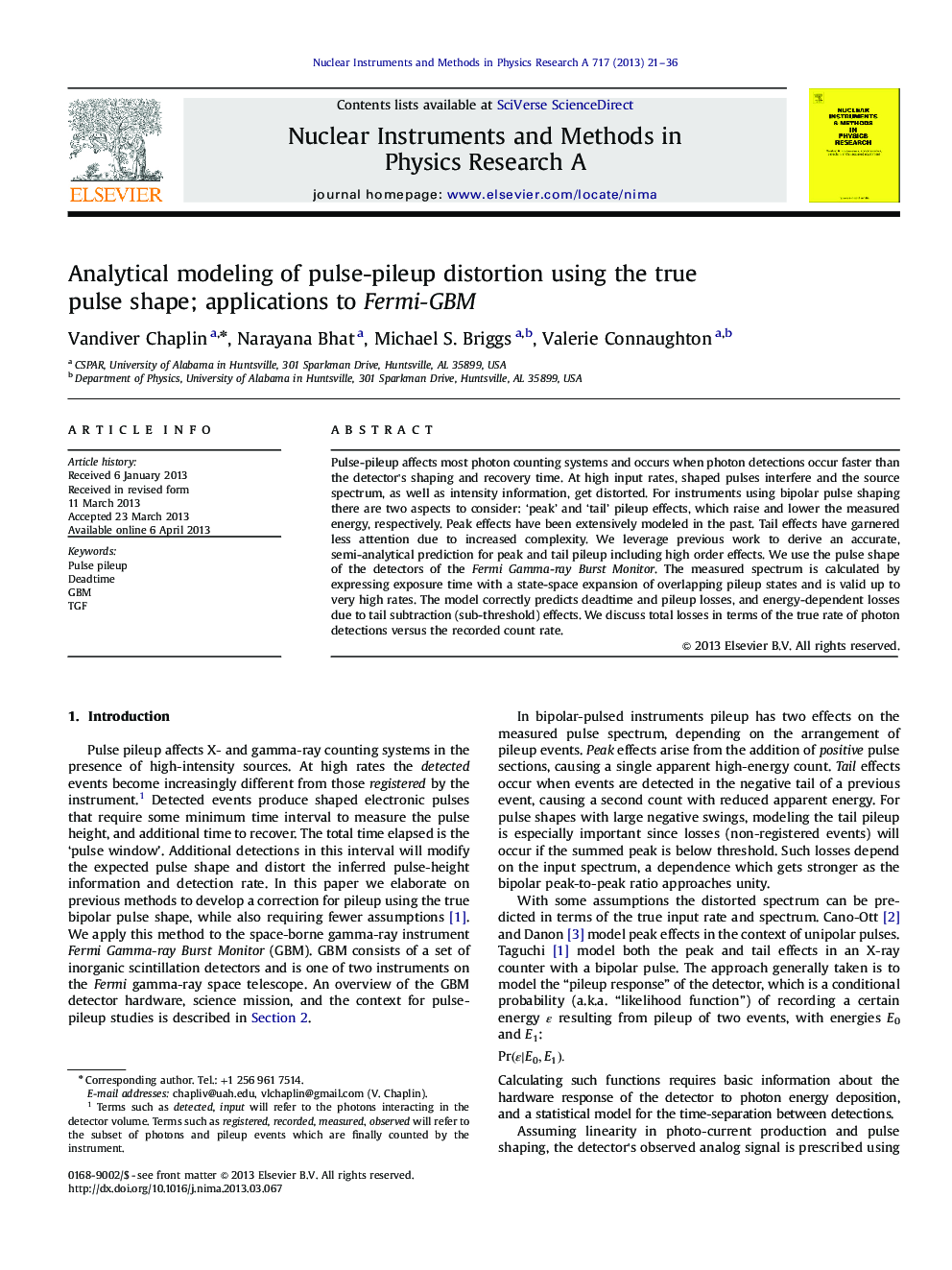| Article ID | Journal | Published Year | Pages | File Type |
|---|---|---|---|---|
| 1823039 | Nuclear Instruments and Methods in Physics Research Section A: Accelerators, Spectrometers, Detectors and Associated Equipment | 2013 | 16 Pages |
Abstract
Pulse-pileup affects most photon counting systems and occurs when photon detections occur faster than the detector's shaping and recovery time. At high input rates, shaped pulses interfere and the source spectrum, as well as intensity information, get distorted. For instruments using bipolar pulse shaping there are two aspects to consider: 'peak' and 'tail' pileup effects, which raise and lower the measured energy, respectively. Peak effects have been extensively modeled in the past. Tail effects have garnered less attention due to increased complexity. We leverage previous work to derive an accurate, semi-analytical prediction for peak and tail pileup including high order effects. We use the pulse shape of the detectors of the Fermi Gamma-ray Burst Monitor. The measured spectrum is calculated by expressing exposure time with a state-space expansion of overlapping pileup states and is valid up to very high rates. The model correctly predicts deadtime and pileup losses, and energy-dependent losses due to tail subtraction (sub-threshold) effects. We discuss total losses in terms of the true rate of photon detections versus the recorded count rate.
Related Topics
Physical Sciences and Engineering
Physics and Astronomy
Instrumentation
Authors
Vandiver Chaplin, Narayana Bhat, Michael S. Briggs, Valerie Connaughton,
